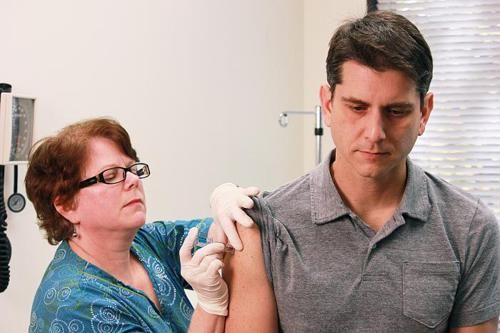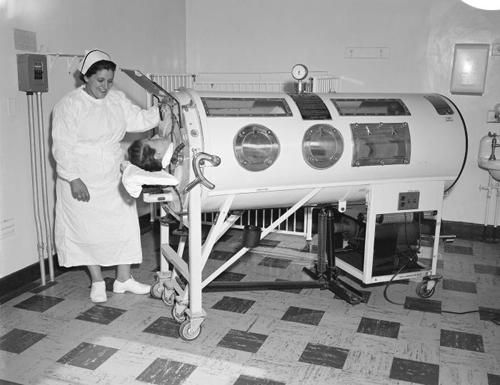This topic takes on average 55 minutes to read.
There are a number of interactive features in this resource:
 Human biology
Human biology
 Biology
Biology
 Physical education
Physical education
Common problems affecting the breathing system include asthma and smoking related diseases. These are not the only problems which affect various parts of the breathing system. Some of the others include:

Flu vaccines protect people against the most common flu viruses. (Photo credit: Douglas Jordan, M.A.)
Sometimes people struggle to breathe. There are a number of different reasons for this. They include:
Scientists have developed some artificial aids to help people who have problems breathing. There are two basic methods:

An iron lung in use on a patient with polio in the 1960s